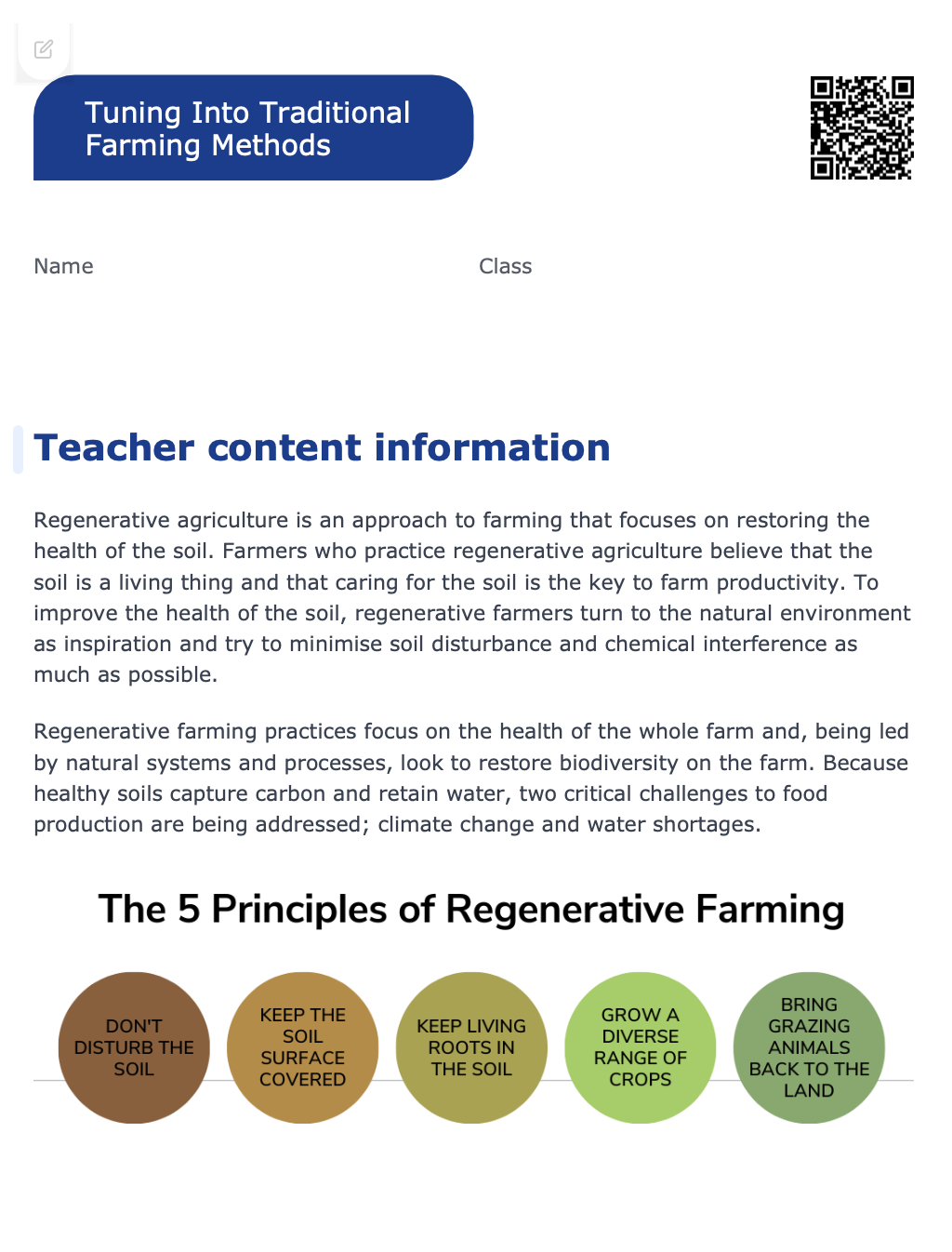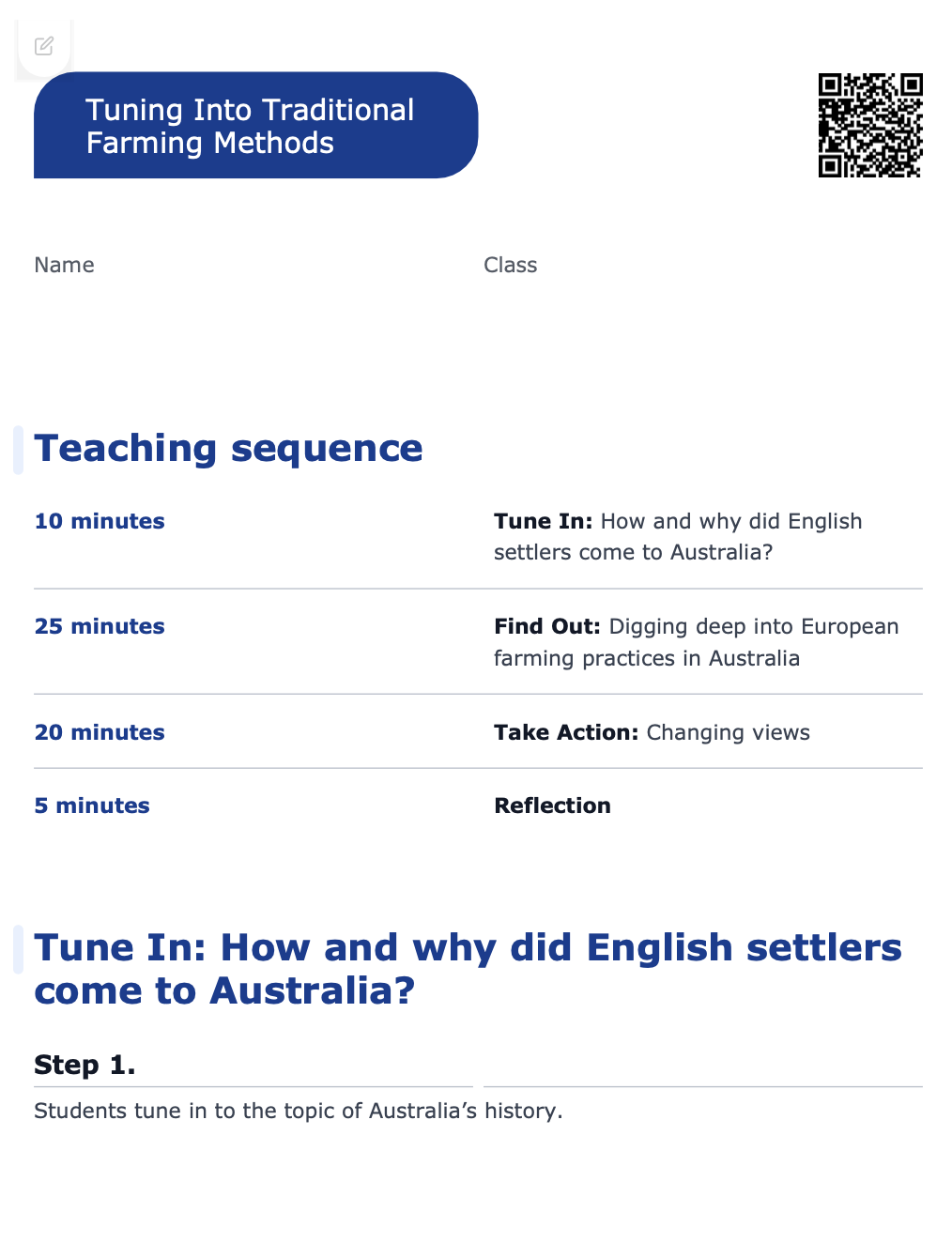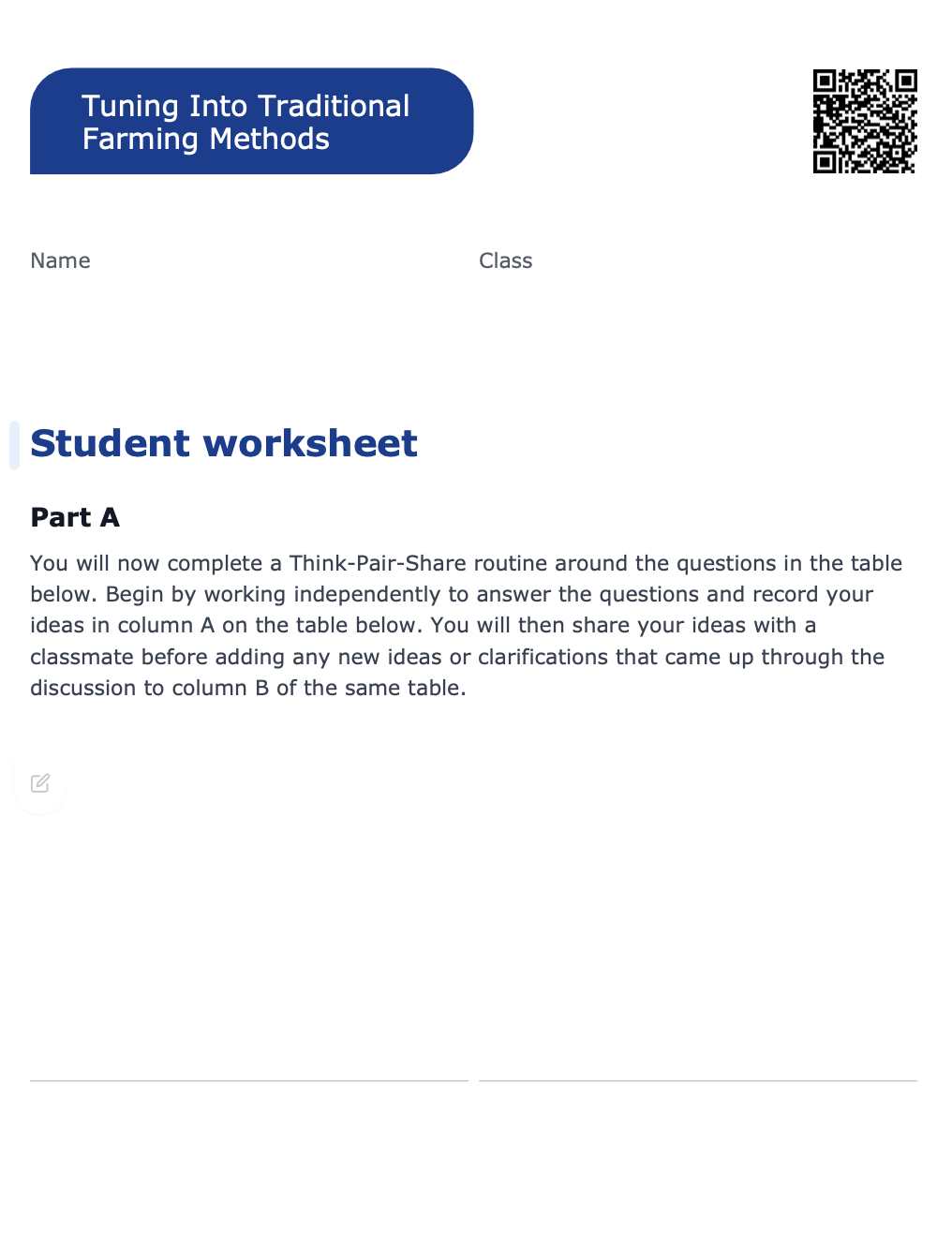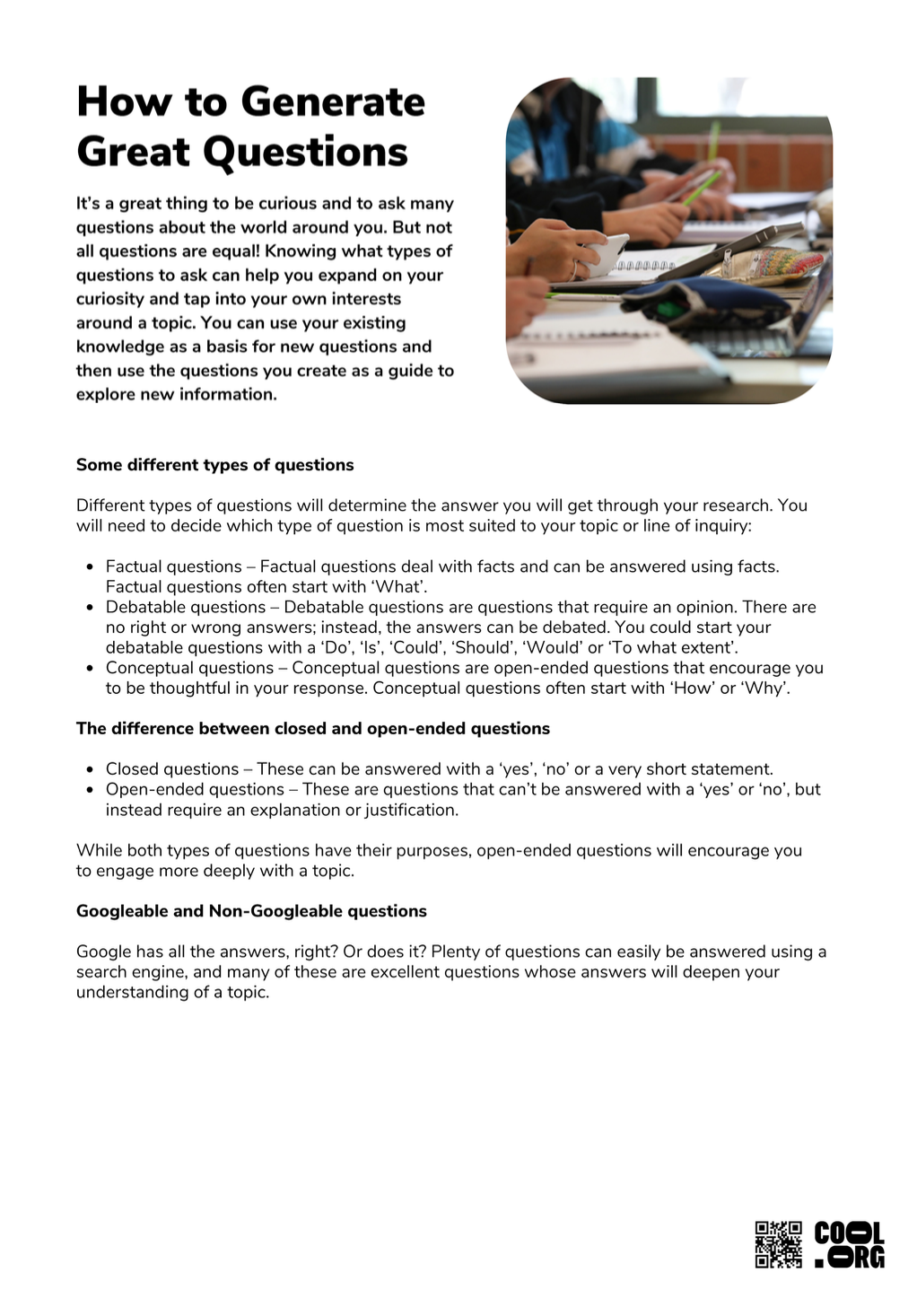Lesson summary
Students will explore the history of agricultural practices in Australia. They will research traditional agricultural practices since European arrival in Australia, the challenges that farmers faced and how practices were altered to suit the technological advances and methods of the time.
Learning intentions:
Students will...
- understand the history of farming in Australia since European arrival and how/why farming practices have changed over time
- explore some of the economic and technological factors that have impacted agricultural productivity in Australia.
Success criteria:
Students can...
- describe the challenges farmers have faced on Australian soil since European arrival in 1788
- explain how technology and changing principles have shaped Australia’s farming practices over the last 200+ years.
Lesson guides and printables
Curriculum links
Select your curriculum from the options below.
Lesson details
Skills
This lesson is designed to build students’ competencies in the following skills:
- communication
- collaboration
Curriculum Mapping
Australian Curriculum (v9.0) content descriptions - Geography Year 9
Students learn to:
- understand the challenges to sustainable food production and food security in Australia and appropriate management strategies (AC9HG9K04)
- understand the environmental, economic and technological factors that impact agricultural productivity, in Australia and a country in Asia (AC9HG9K03)
General capabilities: Literacy, Critical and Creative Thinking
Cross-curriculum priority: Sustainability.
Relevant parts of Year 9 Geography achievement standards:
Students analyse the interconnections between people and places and environments. Students analyse strategies to address a geographical phenomenon or challenge using environmental, social or economic criteria.
UN Sustainable Development Goals
Target 2.4: By 2030, ensure sustainable food production systems and implement resilient agricultural practices that increase productivity and production, that help maintain ecosystems, that strengthen capacity for adaptation to climate change, extreme weather, drought, flooding and other disasters and that progressively improve land and soil quality
Target 15.3: By 2030, combat desertification, restore degraded land and soil, including land affected by desertification, drought and floods, and strive to achieve a land degradation-neutral world
Resources Required
- devices capable of internet access
- Generating Questions fact sheet
- pens/pencils
- scraps of paper - 3 per student
- Student Worksheet - one per student
Additional Info
Level of teacher scaffolding: Low to medium - assist students as required, guide supported students, lead discussion as required.
Special thanks to:

This lesson has been developed with the support of the Macdoch Foundation.
This lesson includes video content of the brilliant new feature documentary from WildBear Entertainment, New Town Films and Regen Studios - go to Rachel’s Farm to see the entire film.
Cool.org's curriculum team continually reviews and refines our resources to be in line with changes to the Australian Curriculum.





Welcome back!
Don't have an account yet?
Log in with:
Create your free Cool.org account.
Many of our resources are free, with an option to upgrade to Cool+ for premium content.
Already have an account?
Sign up with:
By signing up you accept Cool.org's Terms and Conditions(Opens in new tab) and Privacy Policy(Opens in new tab).